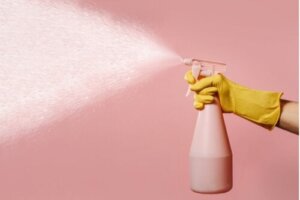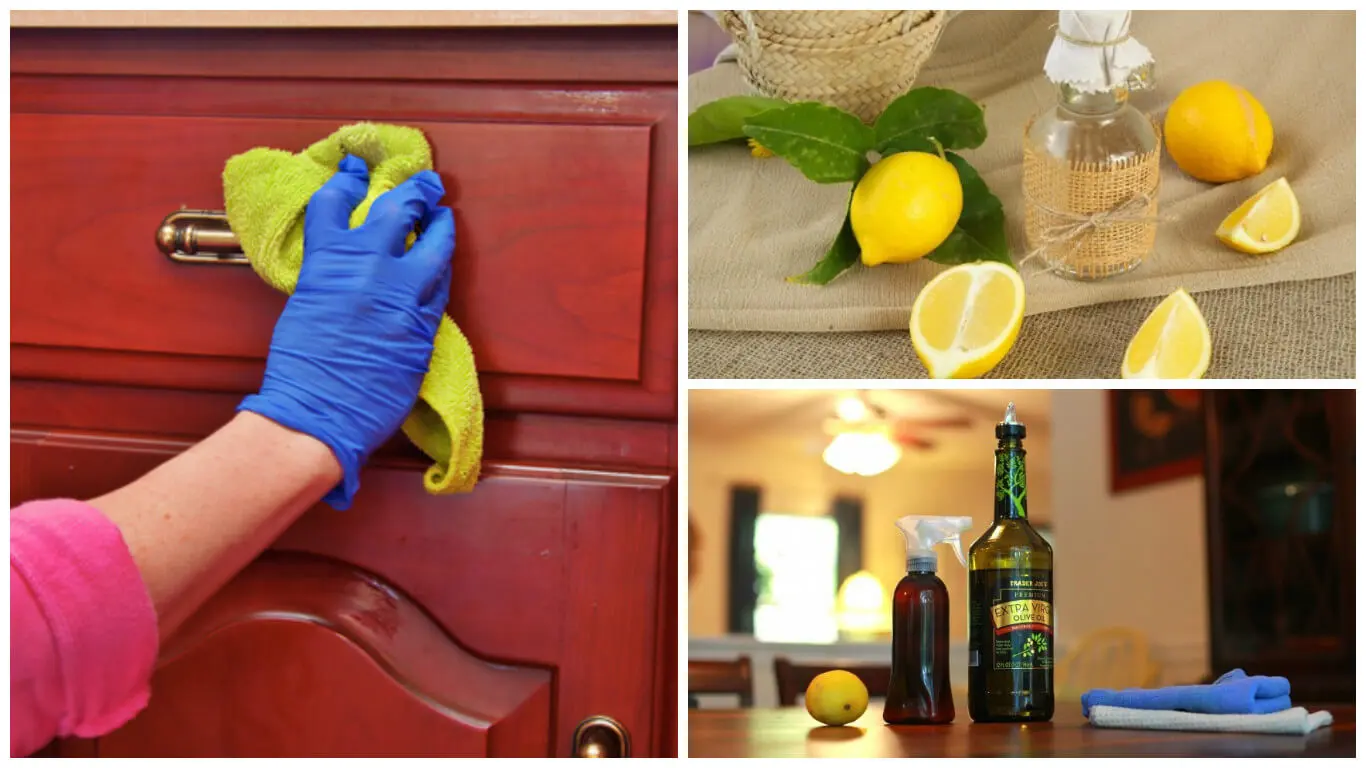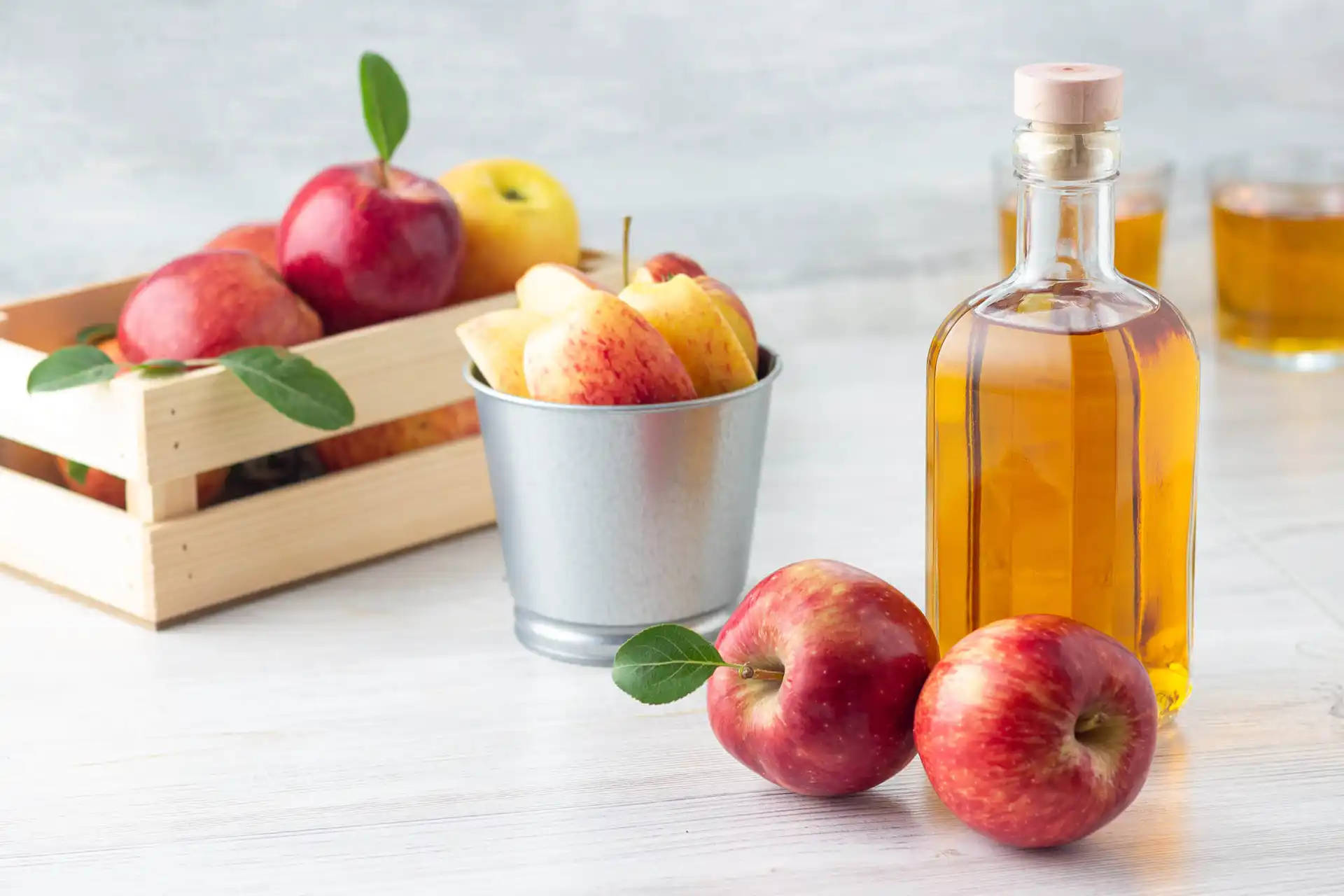How to Reuse a Spray Bottle: 6 Interesting Things You Can Do

The first thing many people tend to do when they finish the contents of any bottle is to discard it and buy a new one to replace it. In reality, there are many things you can do to reuse a spray bottle. Here, we’ll tell you how to give it a second chance before throwing it away.
The idea is that we can recycle it to contribute to the care of the environment, on the one hand, and save money on the other. In this sense, if you can make your own products and use them in one of these bottles, you’ll notice the difference in cost between a store-bought one and a homemade one.
1. Make your own multipurpose cleaner
The first of the ideas has to do with the so famous and widely used multipurpose cleaner, which shouldn’t be missing in any home. Buying it new can be a bit expensive, so we suggest you try making your own at home.
In addition to your spray bottle, you’ll need the following:
- 2 cups of white vinegar
- Peels of 2 lemons
- A few sprigs of thyme
- 1 teaspoon of Castile soap
- 35 drops of lemon essential oil
Once you’ve mixed all these ingredients together, let them sit for a couple of weeks and you’re done!Be patient, because it’s worth the wait.

2. Prepare an outdoor cleaner to reuse a spray bottle
Spring and summer invite us to spend more time in the garden or on the terrace enjoying the pleasant days. At this point, you can prepare a cleaner that works for outdoor furniture and will leave them spotless.
With only 3 ingredients, you’ll have an excellent outdoor cleaner:
- 1 cup of white vinegar
- 2 cups of water
- 2 or 3 shots of liquid hand soap
The only caveat we make is that the soap you use has to contain detergent (sulfate among the ingredients) for it to take effect. Mix everything together and put the preparation in your spray bottle. Then it’s ready for use!
We think you may also enjoy reading this article: Five Ideas to Decorate Your Living Room with Recycled Materials
3. Create a homemade glass cleaner
This is one of the most specific cleaning products out there, since we buy it for one use only: cleaning glass and mirrors. We think it’s a good idea to make your own and learn how to reuse a spray bottle efficiently.
Mix one part white vinegar, one part water, and a few drops of kitchen detergent. The only recommendation is that you apply it directly to the microfiber cloth and not on the surface you’re going to clean. Another suggestion is to mix one cup of tap water with one cup of isopropyl alcohol and one tablespoon of vinegar.
4. Make a room deodorizer
Keeping the rooms of your house with a pleasant aroma generates a feeling of well-being and tranquility. Although this recipe can have your favorite herbs and flowers, we’ll leave you this idea: boil eucalyptus, lavender, and myrtle; when it’s cooled, place the preparation in your spray bottle.
5. Make a wrinkle remover for clothes
If you’re not a fan of ironing but you like your clothes to be wrinkle-free, then you can try this solution with only 3 ingredients to remove creases from clothes.
Mix 2 cups of water, 1 tablespoon of white vinegar, and 1 teaspoon of hair conditioner in your empty container. Spray this preparation on the garments, then gently stretch them out. You’ll notice how the wrinkles diminish considerably.
Like this article? You may also like to read: How to Use Recycled Glass Bottles to Decorate your Garden
6. Make a natural weed killer when you reuse a spray bottle
Weeds in the garden are a seemingly never-ending problem. If you pull them out by hand, they come back. And chemicals aren’t always that effective. Here’s one of the best ideas for reusing your spray bottles.
Mix and then vigorously whisk these ingredients in a 500 ml bottle:
- 2 cups of distilled white vinegar (or apple cider vinegar)
- 2 tablespoons of table salt
- 1 teaspoon of liquid kitchen detergent

Apply this preparation directly to the weeds and you’ll notice how little by little the weeds will wither away.
Apple cider vinegar is a product with multiple applications. It’s used in cosmetics and gardening.
Precautions before reusing a spray bottle
So far, we’ve reviewed 6 ideas that you can put into practice to give other uses to a plastic spray bottle whose contents have already been used up. However, it’s important to be careful to clean it well before refilling it with another preparation.
As a first step, if the original content of the bottle was bleach or ammonia, we recommend that no matter how thoroughly you wash it, you don’t refill it with products that you’re going to use on food or on your skin. Also, remember that there are chemicals that can’t be mixed together because they could be dangerous when combined.
Finally, to clean empty bottles thoroughly, use warm water and soap. Shake the container well and press the atomizer to ensure that the remains are completely removed.
Reusing a spray bottle is caring for the planet
We hope you can apply some of these very practical and simple ideas to extend the life of these plastic containers. Each of the products we’ve suggested is made from elements that you surely have at home, so they’re inexpensive to make.
All cited sources were thoroughly reviewed by our team to ensure their quality, reliability, currency, and validity. The bibliography of this article was considered reliable and of academic or scientific accuracy.
- Equipo Vértice. (2011). Manipulación de productos químicos y de limpieza. Editorial Vértice.
- Marcos, F. V. (1996). Prevención y control del riesgo de los productos químicos. Rev Esp Salud Pública, 70(4), 409-420.
- Muñoz, F. R. (2021). El herbicida glifosato y sus alternativas.
- Diaz Guzman, L. J. (2021). Reciclaje de botellas plásticas reutilizadas como mantas polares.
- Ayala, M., Hernandez, M., & Loor, N. (2012). PROYECTO DE ECOEFICIENCIA RECICLAJE DE BOTELLAS PET. Revista de la Universidad Espíritu Santo UEES.
- Gaibor, J. S. Q., & Ortiz, J. (2018). Ética En La Producción De Botellas Plásticas Y Su Contaminación Al Medio Ambiente. Revista Caribeña De Las Ciencias Sociales, 2018(9).
This text is provided for informational purposes only and does not replace consultation with a professional. If in doubt, consult your specialist.








